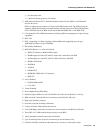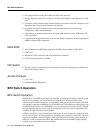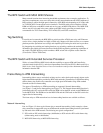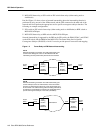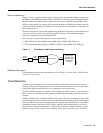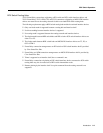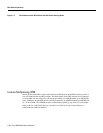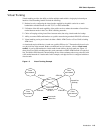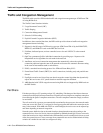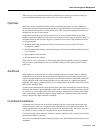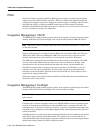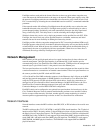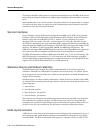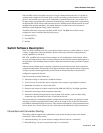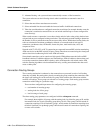
Introduction 1-13
BPX Switch Operation
Virtual Trunking
Virtual trunking provides the ability to define multiple trunks within a single physical trunk port
interface. Virtual trunking benefits include the following:
• Reduced cost by configuring the virtual trunks supplied by the public carrier for as much
bandwidth as needed instead of at full T3, E3, or OC3 bandwidths.
• Utilization of the full mesh capability of the public carrier to reduce the number of leased lines
needed between nodes in the Cisco WAN switching networks.
• Choice of keeping existing leased lines between nodes, but using virtual trunks for backup.
• Ability to connect BNI trunk interfaces to a public network using standard ATM UNI cell format.
• Virtual trunking can be provisioned via either a Public ATM Cloud or a Cisco WAN switching
ATM cloud.
A virtual trunk may be defined as a “trunk over a public ATM service”. The trunk really doesn’t exist
as a physical line in the network. Rather, an additional level of reference, called a virtual trunk
number, is used to differentiate the virtual trunks found within a physical trunk port. Figure 1-5
shows four Cisco WAN switching networks, each connected to a Public ATM Network via a physical
line. The Public ATM Network is shown linking all four of these subnetworks to every other one with
a full meshed network of virtual trunks. In this example, each physical line is configured with three
virtual trunks.
Figure 1-5 Virtual Trunking Example
Cisco
sub-network
Cisco
sub-network
Cisco
sub-network
Cisco
sub-network
Public ATM
Network
ATM-UNI ATM-UNI
ATM-UNI ATM-UNI
Virtual trunk
Leased line
H8227
Leased line
(backup)



